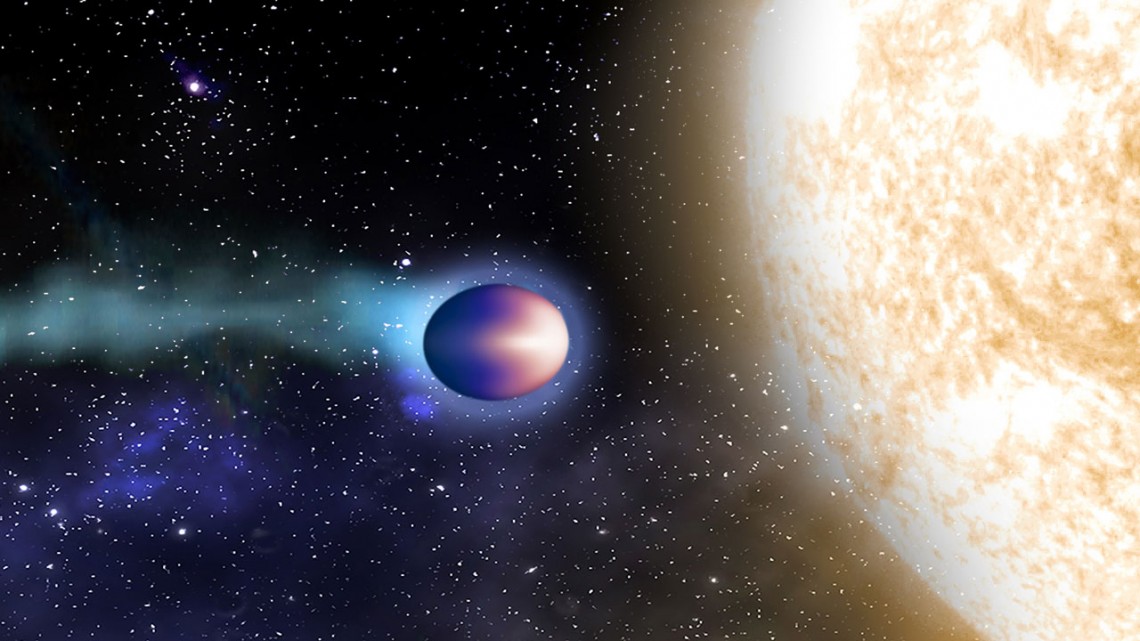
Atmospheric gases recede from a “hot Jupiter,” which is a Jupiter-size, egg-shaped planet that orbits close to its own sun, in this artistic rendering. Cornell astronomers have developed a new mathematical model for determining temperatures on different parts of exoplanets, rather than averaging a planet’s temperature. Matthew Fondeur/Cornell University
After spotting a curious pattern in scientific papers – they described exoplanets as being cooler than expected – Cornell University astronomers have improved a mathematical model to accurately gauge the temperatures of planets from solar systems hundreds of light-years away.
This new model allows scientists to gather data on an exoplanet’s molecular chemistry and gain insight on the cosmos’ planetary beginnings, according to research...
Read More









Recent Comments